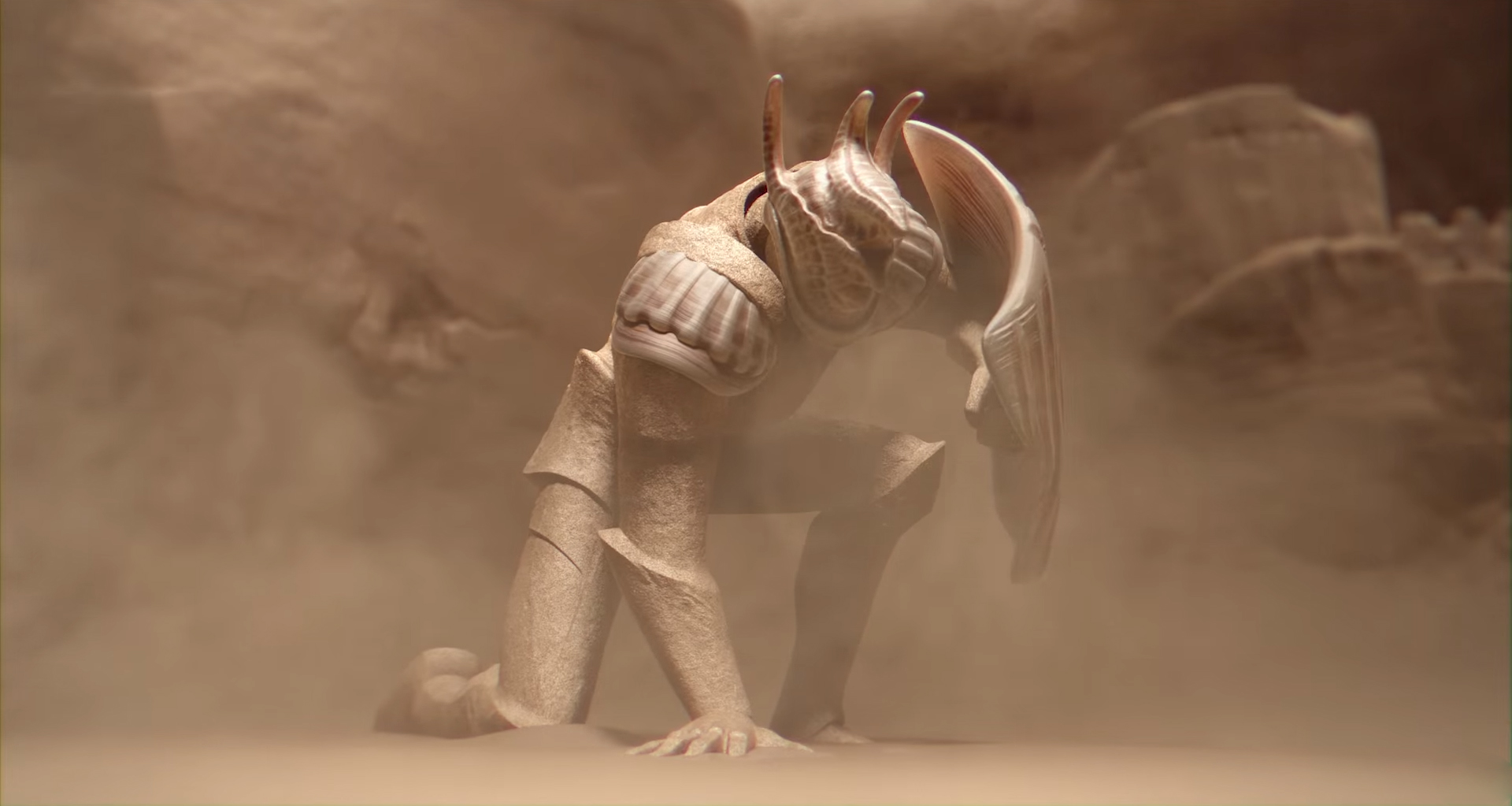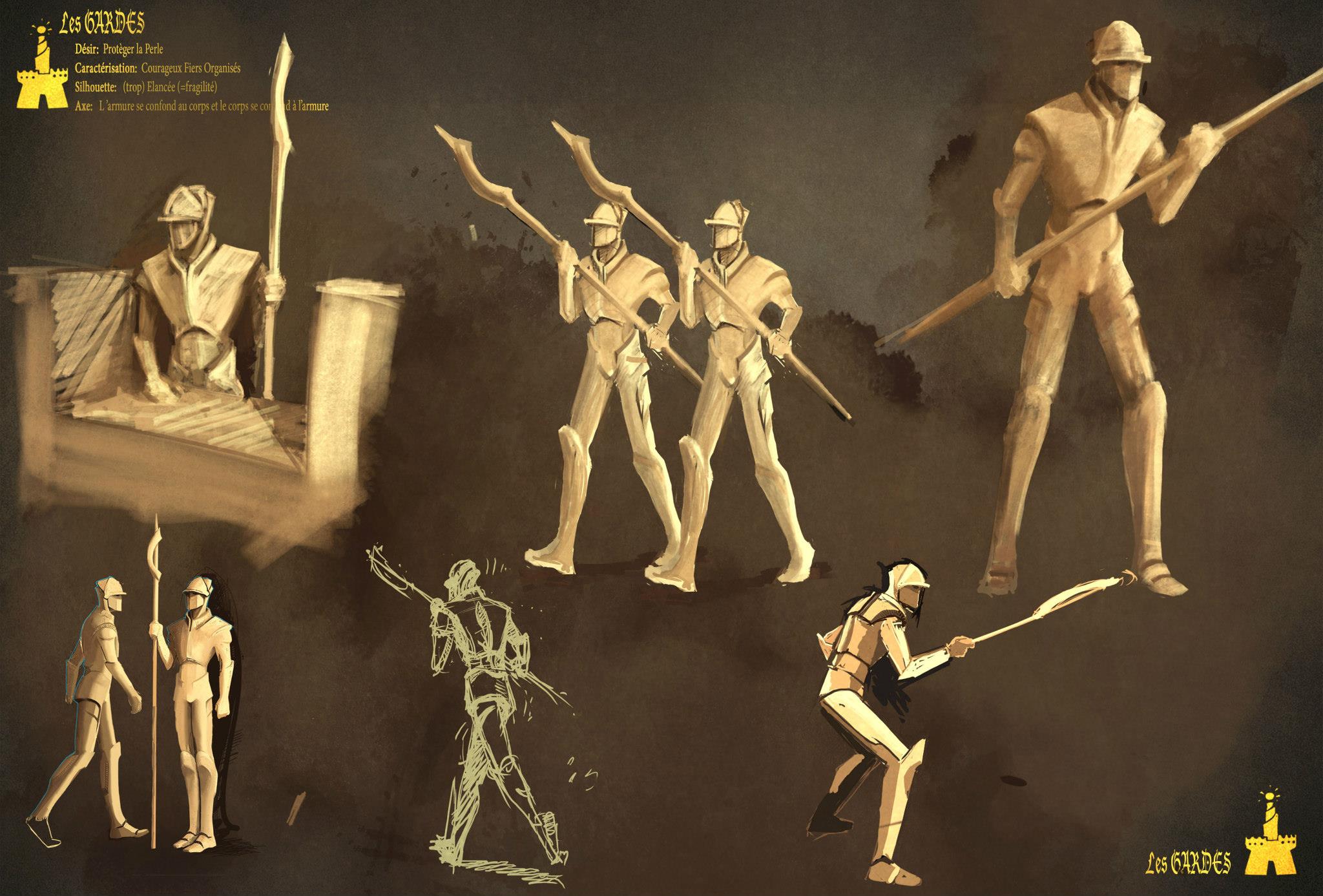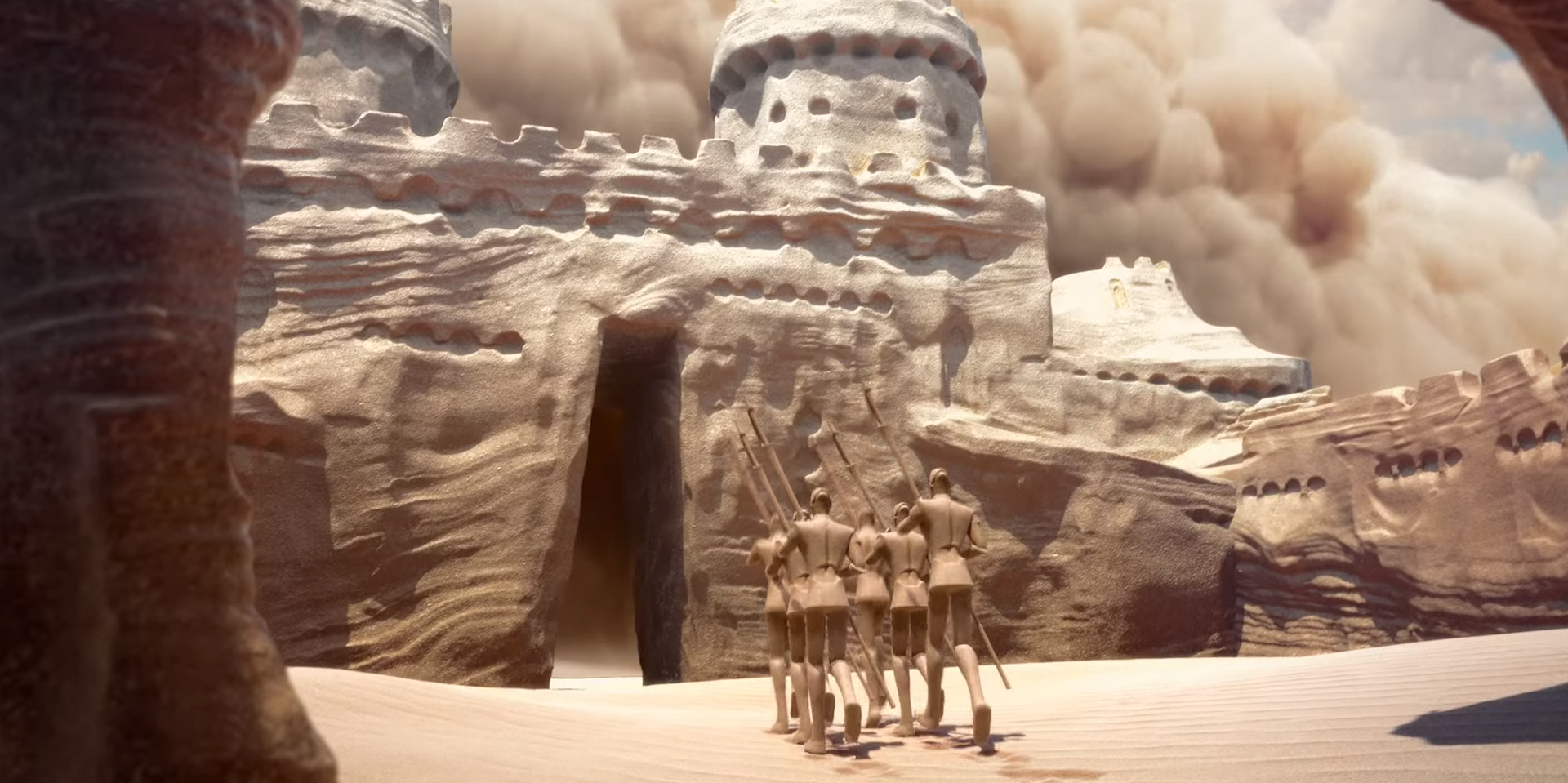ESMA Students go to the Beach for Award-Winning Short
The tools at the disposal of new filmmakers today can mean that almost anything is possible - even, it turns out, complicated characters and environments made completely out of sand.
That’s what was required for the animated short film Le Château de Sable, conceived by students studying at the prestigious French art school ESMA (École Supérieure des Métiers Artistiques). The film, which has already garnered multiple awards at festivals and events, tells the story of sand soldiers who protect a delicate pearl from a giant crab, with a twist ending.
Watch the teaser for Le Château de Sable
A crucial tool in the arsenal of the ESMA students was Houdini and Houdini Engine for realizing the sand particle effects which are front and centre in the short. We talked to Sylvain Robert, one of the five directors, about how the film was made.
A Story in Sand
Robert, who is now working at Framestore in London as an FX TD, undertook a three year course at ESMA (a Houdini-certified school). The first two years, he says, were about “learning everything to make an animated short movie - modeling, rendering, compositing, animation, 2D/3D, rigging, drawing, character design, storyboarding and storytelling.”

A still from the final short. A group of soldiers hold down their castle against a giant crab.
It was in the final year of study that Robert and four of his classmates - Quentin Deleau, Lucie Foncelle, Maxime Goudal and Julien Paris - banded together to make an actual short. Paris wrote the story about the fantastical sand castle, keeping the action within the scope of the viewer, and the directors then set about solving some of the initial technical challenges.
“Since the very beginning,” recalls Robert, “we knew about the amount of technical issues we would have to solve. There were more than 50 technical shots to develop, with a lot of visual effects - and less than three months to do so. We had to be clever and to choose the correct software.”

Concept sketches for the soldiers
That software, says Robert, was Houdini. “I learned Houdini on my own during my second year for a camera tracking school project, and it saved us because it was the only one we really needed for this short.”
But why did Houdini prove so crucial? Robert suggests the software “increased our possibilities as filmmakers for all the visual effects. We could use it for the animatics to get quick views of the effects for lookdev and for the camera motion and the storytelling. We also used Houdini Digital Assets as a means of maintaining the the same level of quality and effects throughout the short.”
Building Sandcastles (and sand-everything)
Around eight months was spent in pre-production – involving story development, seeking sand and beach references, designing characters, devising a colorscript and storyboarding.

A wall of sand approaches
A stable of software packages would be utilized - Maya for modeling, rigging, animation and shading, Arnold for rendering, Houdini for FX (with Houdini Engine), Photoscan to build sand brushes for sculpting, Mudbox for sculpting, and NUKE for compositing.
Since the film featured at least 60 shots with sand and water simulations, the choice of Houdini was clear.
“Houdini was the only software able to do all these effects,” says Robert. “We also chose it for its speed, polyvalence, stability, and the flexibility of its node-based features.”

A sand storm continues to brew
In particular, Houdini helped the directors with the sand sims.
“It was the only software available with a Point Based Dynamic (PBD) solver capable of simulating very realistic sand,” comments Robert. “It also allowed us to use other simulation techniques way more faster, like the FLIP Fluid - we used it for the water but it can also be used for sand simulation - or POP Particle, which allowed us to simulate a million particles in real time.”
“We had some larger scale shots where we used Rigid Body with a nice constraint network like glue,” adds Robert, “and the solver bullet for a fast and precise pre-visualisation. In addition to these tools, we also used Pyro for the smoke.”
Watch the making of for Le Château de Sable
What helped, too, was the use of Houdini Engine to send smoke and particle effects through to Maya to be rendered and, notes Robert, “to add some custom parameters for some shots into the Maya OTL.”
Although Arnold was the principal renderer, the Mantra renderer inside Houdini did get used for some smoke, which was rendered as a depth pass for comp.
Short Film: Long Success
Le Château de Sable was finished in September 2015 and quickly made the rounds at numerous festivals, winning 17 prizes – became nominated for dozens more – and was broadcast on Canal+ in Europe and Africa and at several festivals. It will be officially released just after FMX 2017 in early May. The ESMA students have certainly come a long way.
For more information on the short, see the Facebook page: https://www.facebook.com/LeChateauDeSableESMA/
COMMENTS
Please log in to leave a comment.